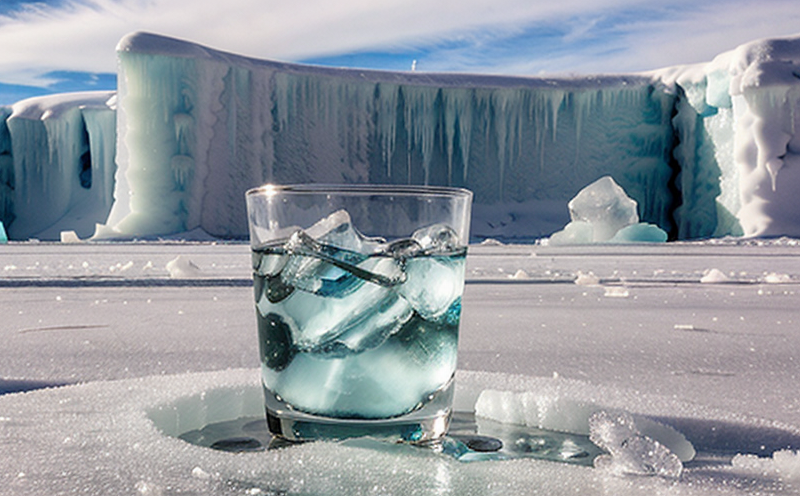Testing for resistance to ice formation and the potential for materials to crack or deform
The Importance of Testing for Resistance to Ice Formation Protecting Your Business from the Unpredictable
As a business owner, you understand that unexpected events can have far-reaching consequences on your operations and bottom line. One such event is the formation of ice, which can lead to catastrophic failures in materials, equipment, and even entire infrastructure projects. To mitigate this risk, its essential to test for resistance to ice formation and the potential for materials to crack or deform.
Eurolab offers a comprehensive laboratory service that assesses the performance of various materials under conditions that mimic real-world ice formation scenarios. By conducting these tests, you can gain valuable insights into your products behavior, make informed decisions about their suitability for specific applications, and protect your business from potential liabilities.
The Risks Associated with Ice Formation
Ice formation is a common problem in industries such as construction, transportation, and manufacturing. It can occur due to exposure to freezing temperatures, water condensation, or other environmental factors. When materials fail to resist ice formation, they may exhibit significant changes in their physical properties, leading to
Material degradation Ice formation can weaken or damage the internal structure of materials, compromising their integrity and functionality.
Equipment failure Frozen components or surfaces can cause equipment malfunctions, resulting in costly repairs or even complete system failures.
Structural collapse In extreme cases, ice formation can lead to catastrophic structural collapses, posing significant risks to human life and property.
The Benefits of Testing for Resistance to Ice Formation
By incorporating testing for resistance to ice formation into your product development process, you can
Key Advantages
Improved Product Reliability Understand how materials perform under real-world conditions, ensuring they meet the required standards for your specific application.
Enhanced Customer Satisfaction Deliver products that withstand extreme temperatures and conditions, reducing the likelihood of material failures and customer complaints.
Reduced Liability Mitigate potential liabilities by testing materials for resistance to ice formation, demonstrating your commitment to quality and safety.
Increased Efficiency Streamline your product development process by identifying potential issues early on, saving time and resources in the long run.
Types of Materials Tested
Eurolabs laboratory service can assess various types of materials commonly used in industries susceptible to ice formation. Our comprehensive testing protocols include
Metals Ferrous and non-ferrous metals, including steel, aluminum, copper, and more.
Polymers Thermoplastics, thermosets, rubber, and other synthetic materials.
Composites Fiberglass, carbon fiber, and other hybrid materials.
Ceramics Advanced ceramic materials used in construction, aerospace, and industrial applications.
The Testing Process
Our team of experienced technicians conducts thorough testing procedures to assess the resistance to ice formation of your materials. We employ advanced equipment and state-of-the-art techniques to simulate real-world conditions, including
Cooling and thawing cycles Simulating temperature fluctuations to evaluate material performance.
Water immersion tests Assessing material behavior under water exposure and potential for ice formation.
Mechanical testing Evaluating the effect of ice formation on material strength and durability.
QA Frequently Asked Questions
What is the purpose of testing for resistance to ice formation?
To assess a materials ability to withstand extreme temperatures, ensuring it meets industry standards and performs as expected in real-world applications.
Which industries benefit from this type of testing?
Construction, transportation, manufacturing, aerospace, and other sectors where materials are exposed to freezing temperatures or water condensation.
What types of materials can be tested for resistance to ice formation?
Metals, polymers, composites, ceramics, and other industrial materials commonly used in industries susceptible to ice formation.
Can I get immediate results from the testing process?
While initial test results are usually available within a few days, comprehensive reports detailing all findings may take longer to complete.
Conclusion
Testing for resistance to ice formation is an essential step in ensuring your businesss products and equipment perform reliably under extreme conditions. By partnering with Eurolab, you can
Gain confidence in the quality of your materials
Reduce potential liabilities and costs associated with material failures
Enhance customer satisfaction through improved product performance
Dont let ice formation compromise your operations or reputation. Choose Eurolab for comprehensive laboratory testing services that guarantee your businesss success in even the most unpredictable environments.
-
Testing the ability of materials to withstand prolonged exposure to environmental elements
-
Simulating long-term exposure to UV light, rain, wind, and temperature fluctuations
-
Evaluating how building materials such as paints, coatings, and sealants hold up under harsh weather
-
Testing for color fading, material cracking, or degradation caused by environmental exposure
-
Ensuring that materials maintain their structural integrity and appearance over time
-
Simulating extreme weather conditions to test how materials react to rapid changes in climate
-
Verifying the durability of construction materials in areas prone to extreme weather patterns
-
Ensuring that exterior materials, including roofing and cladding, remain stable under exposure to the sun
-
Testing the ability of materials to resist the effects of saltwater and humidity in coastal regions
-
Verifying that materials used for outdoor applications are resistant to UV degradation and weathering
-
Simulating the effects of freeze-thaw cycles on construction materials and coatings
-
Evaluating the impact of pollutants in the air on materials used in urban environments
-
Testing how materials respond to repeated exposure to high temperatures and cold snaps
-
Verifying that materials used in construction do not lose their mechanical strength over time
-
Testing the impact of ozone exposure on rubber, plastics, and other vulnerable materials
-
Ensuring that weathered materials retain their original properties and do not compromise building safety
-
Simulating rain, snow, and high winds to determine how materials respond to these forces
-
Testing for the resistance of materials to discoloration or surface damage after extended weather exposure
-
Ensuring that materials used in building envelopes continue to perform in harsh weather without failure
-
Evaluating the protection provided by weather-resistant coatings in long-term outdoor environments
-
Ensuring that materials are capable of withstanding the test of time in outdoor, high-traffic environments




